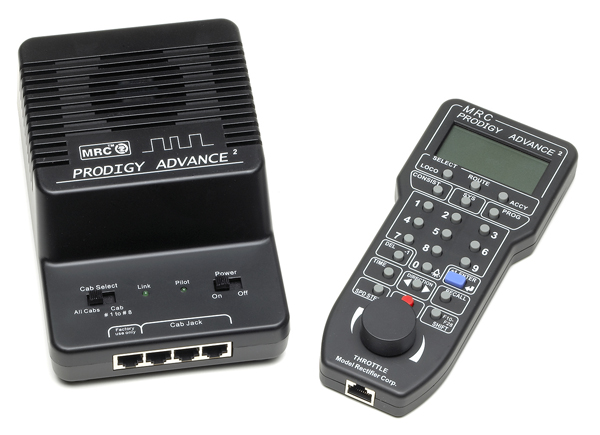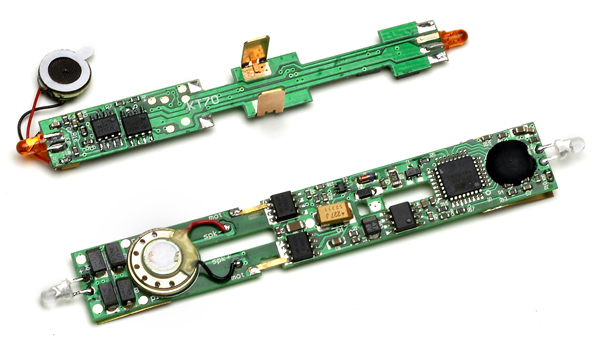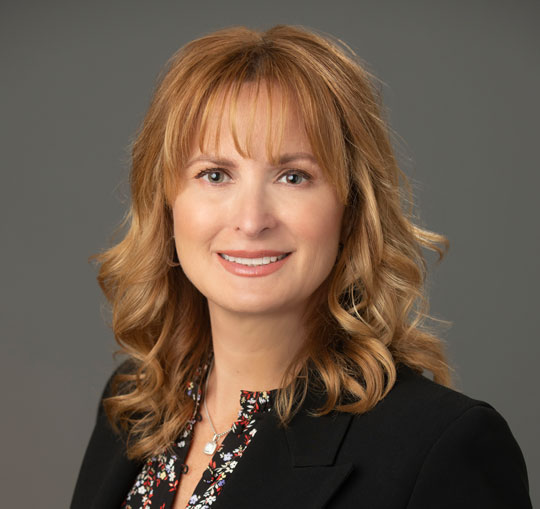Other than the nameplate, there is little to distinguish the original from the new system – the biggest changes are on the inside. The first is that the newest Prodigy has software for use with the impending release of MRC’s wireless Prodigy cabs (coming later in 2007). These will be offered both as plug-and-play add-on components and complete wireless DCC systems. The wireless radio cabs will have built-in rechargeable batteries and can operate engines and pro-gram decoders.
The other exciting new feature is that Prodigy Advance Squared can operate functions 0 through 28. Until now, MRC’s starter system, the Prodigy Express, offered just 16 functions while the original Prodigy Advance had 20. If you have existing Express or Advance throttles, you can still use them with the new system. (Be sure they’re programmed with unique throttle addresses.) However, only the Prodigy Advance throttle can be sent back to MRC to be upgraded to 28 functions.
Functions 0 through 9 are operated by pressing the numbers on the keypad. Functions 10 through 28 are reached using the shift key and then entering the function value. The liquid crystal display (LCD) shows active functions F0 through F12. It also displays when the “shift” button has been activated. Functions 13 to 28 do not appear on the display.
Price: $349.99
Manufacturer
Model Rectifier Corp.
P.O. Box 6312
Edison, NJ 08818-6312
www.modelrectifier.com
Description
Full-feature digital command
control system
Features
Advanced and universal
locomotive consisting
Adjustable fast clock
Encoder knob and
pushbutton speed controls
Expandable to 99 throttles
15-volt, 3.5-amp power
supply
Large LCD screen
Meets NMRA DCC standards
Plug-and-play design
28 DCC functions
Upcoming wireless radio
expansion
Walkaround throttles
I tested the decoders using a Kato SD70MAC and a P42. The sound decoders include two different prime mover sound files – one has a modern diesel whine to it while the other has an older EMD chug. According to MRC these were recorded from a turbocharged SD45 and an MP15 respectively. Despite the tiny speakers needed to fit inside N scale locomotive shells, the sounds were reproduced effectively. With the volume at three-quarter level, the sound quality was clear and was scale-appropriate.
The function assignments for the two decoders are identical. Function 0 controls the headlights, and the next 11 functions are used for common operating sounds, such as the bell, horn, dynamic brakes, coupling noises, manual engine notching, and others. Higher-function slots are used for a variety of features, some of which are lesser-used incidental sounds like compressors, generators, and air releases.
Other functions, however, allow you to change horn, bell, and prime mover sound files, as well as adjust the volume (in four increments) of some of the individual sounds. The decoder uses the programming-on-the-main feature to automatically write the changes in the decoder once you’ve made them, so it remembers your preferences. If you decide you want to start over and reset everything as it comes from the factory, you can do this by programming configuration variable (CV) 125 to a value of 1.
While being able to select sound choices and volumes using function buttons may not seem all that profound on the surface, consider the time that these function-selected preference changes save in programming CVs, and you get the idea of how helpful they really are. Using the printed function chart included with the decoder, I was able to set up both decoders the way I wanted them in a matter of a minute or two. The only actual programming I needed to do was set the locomotive’s address.
Price: $84.98
Manufacturer
Model Rectifier Corp.
P.O. Box 6312
Edison, NJ 08818-6312
www.modelrectifier.com
Description: Sound decoders for Kato N scale diesels
1644 fits EMD SD70MAC and GE AC4400 locomotives
1645 fits GE P42 Genesis and EMD E8 and E9 locomotives
Features
Advanced consisting
Drop-in installation
Function selection of sound
types and volumes
Manual or automatic engine
notching
1-watt amplifier
7 bell types
16-ohm speaker
28 functions
12 horn selections
2 EMD diesel engine sounds















